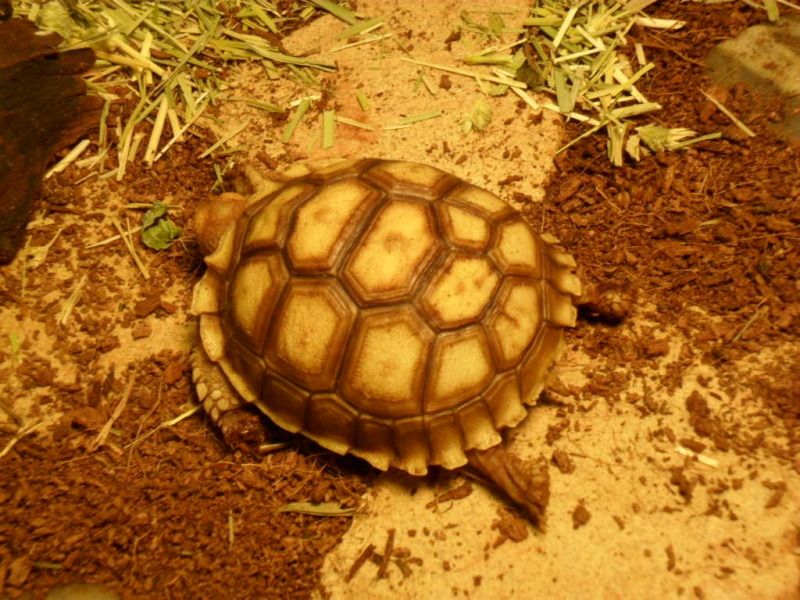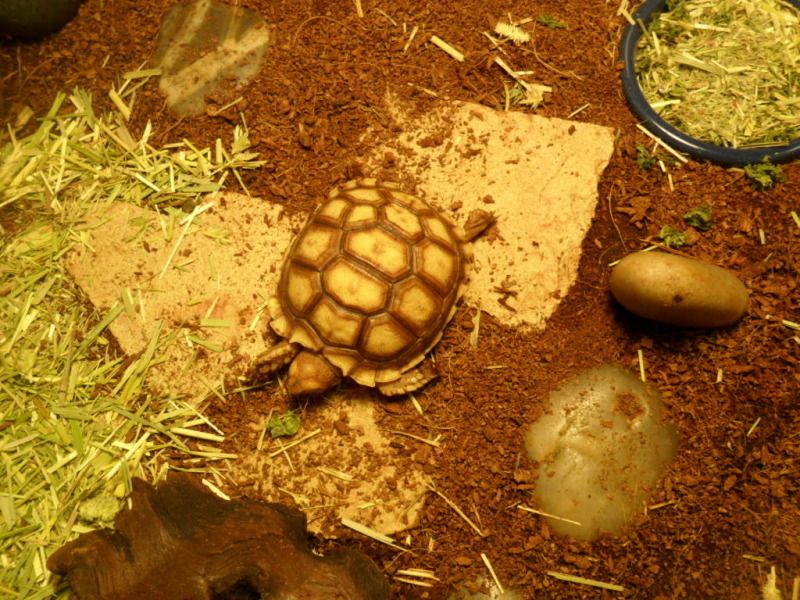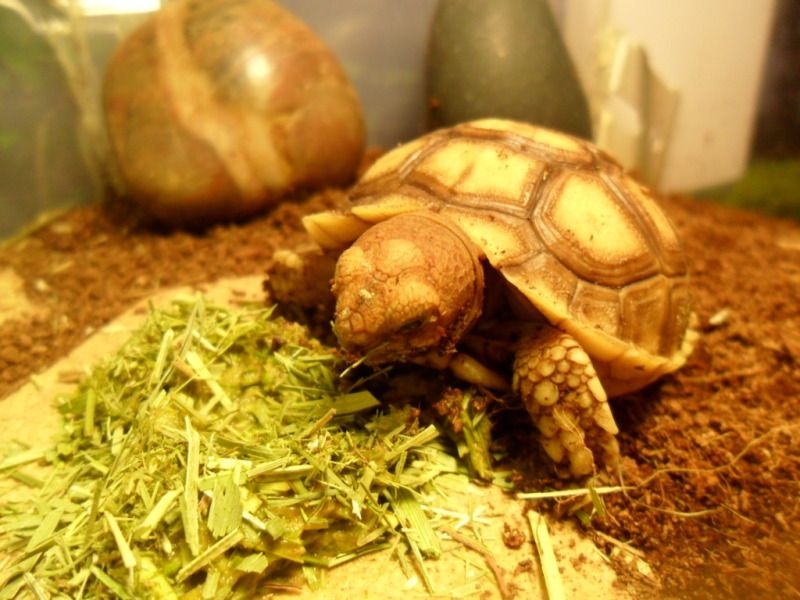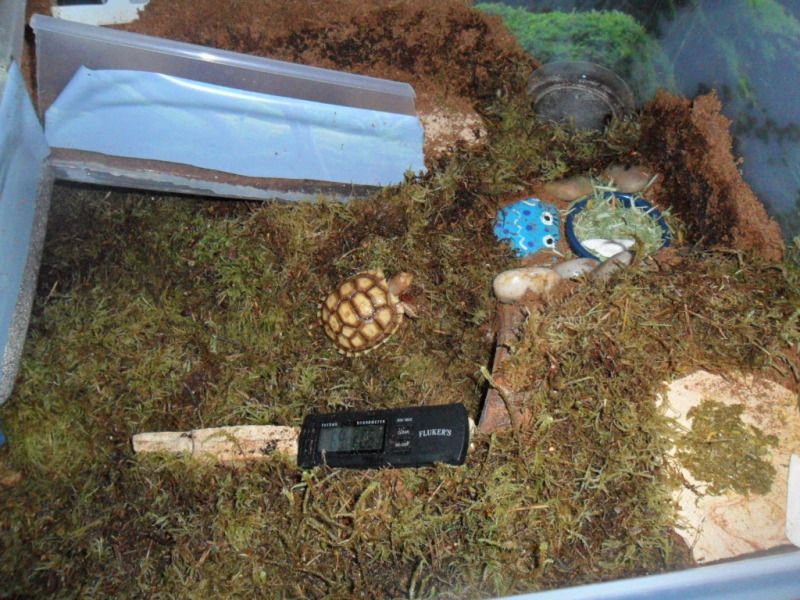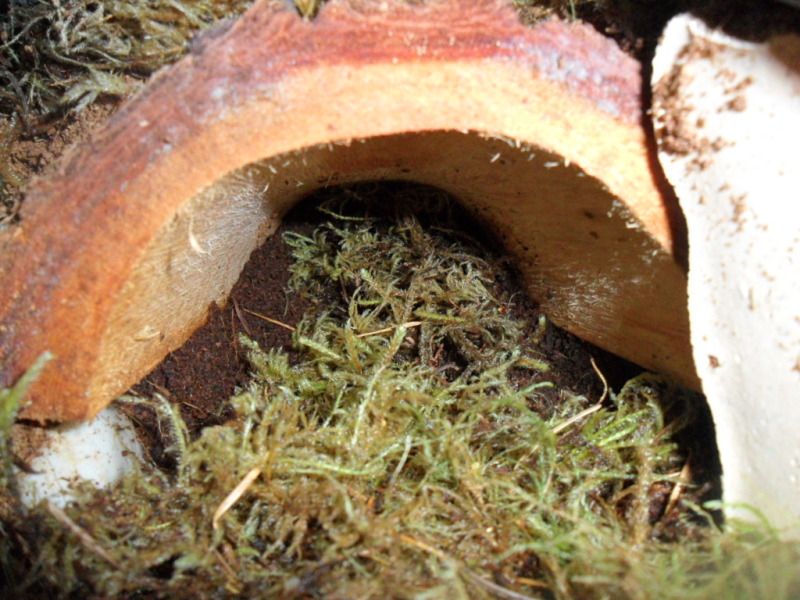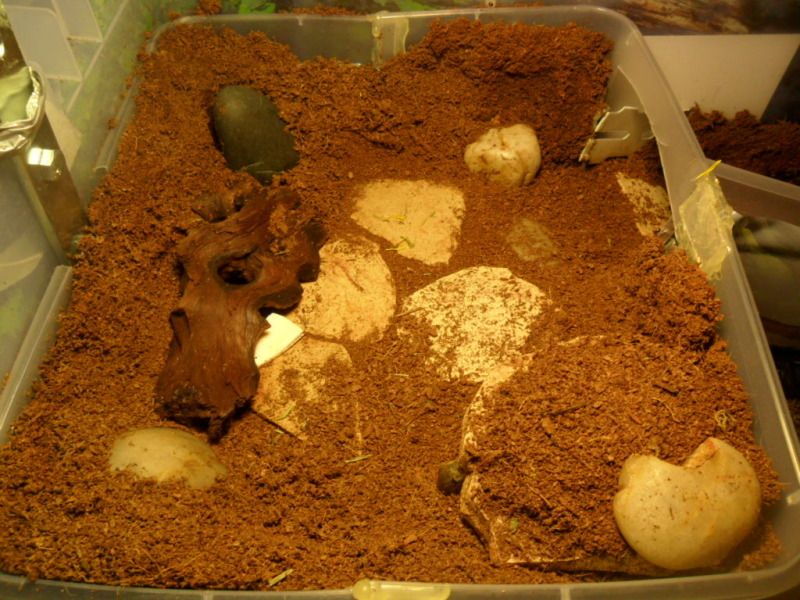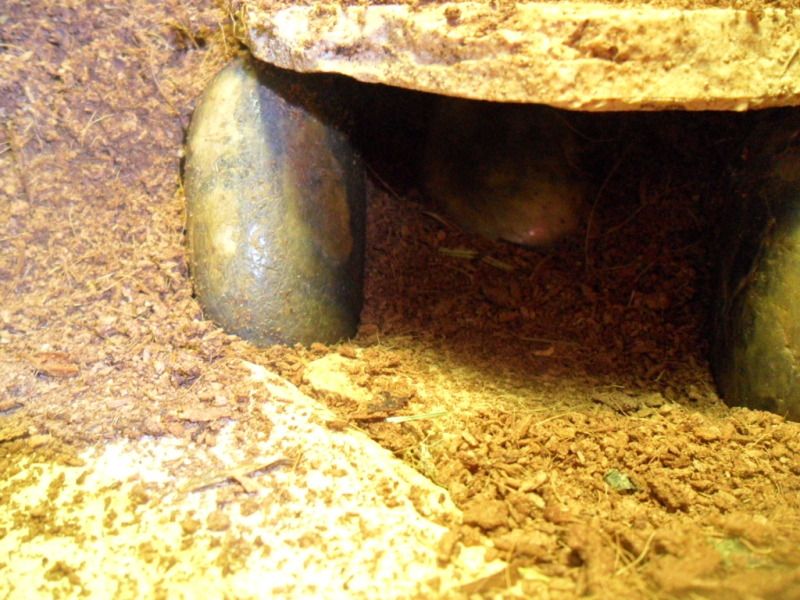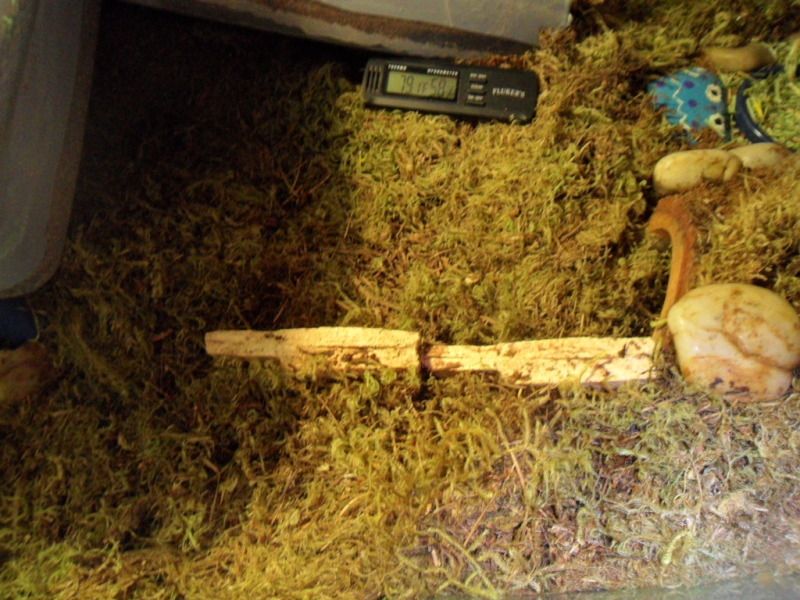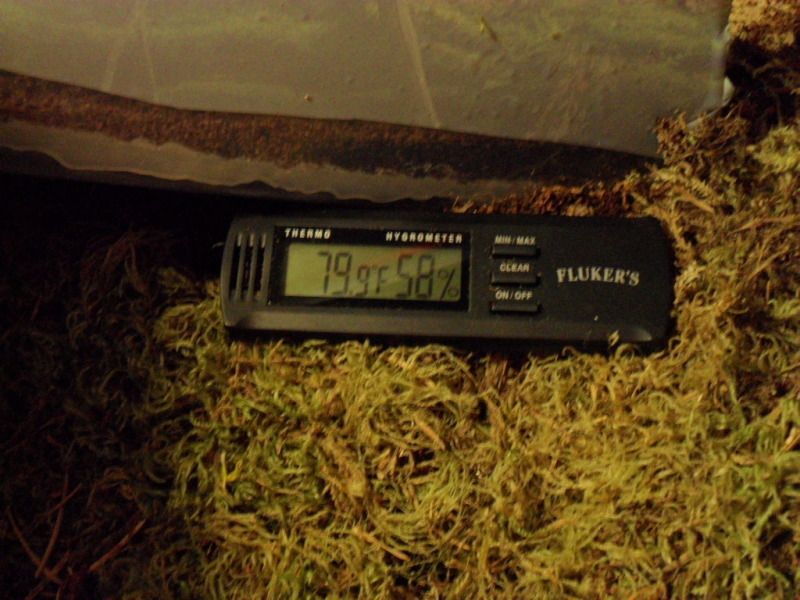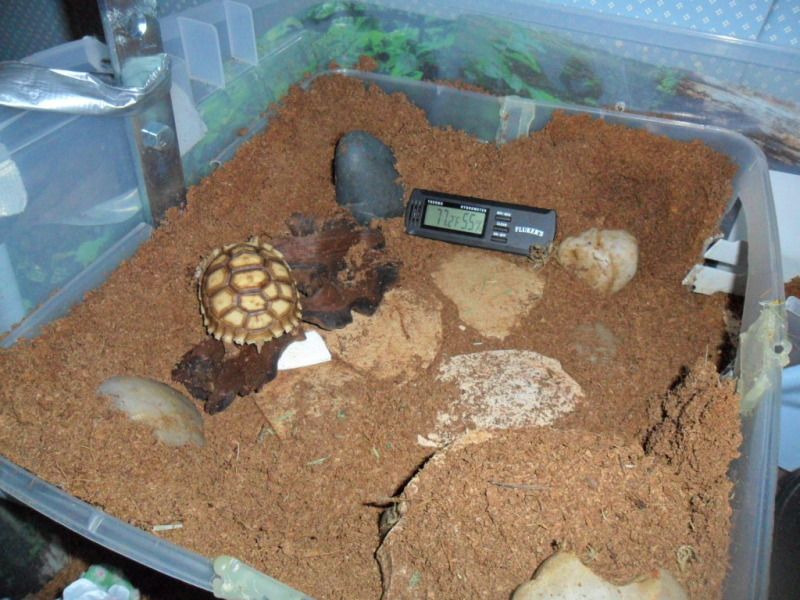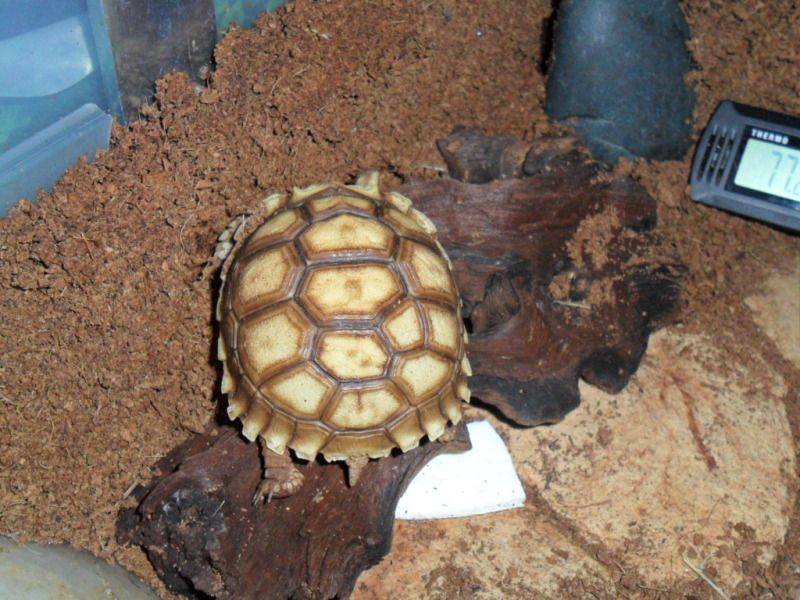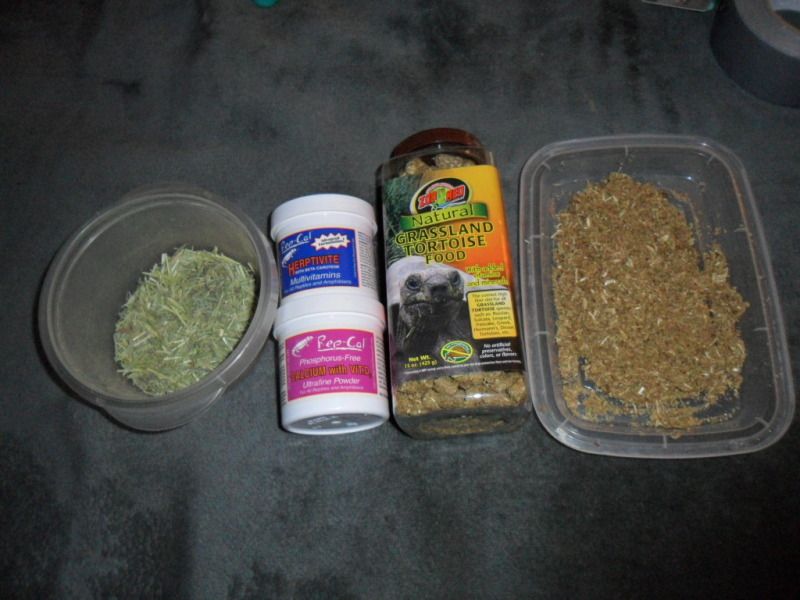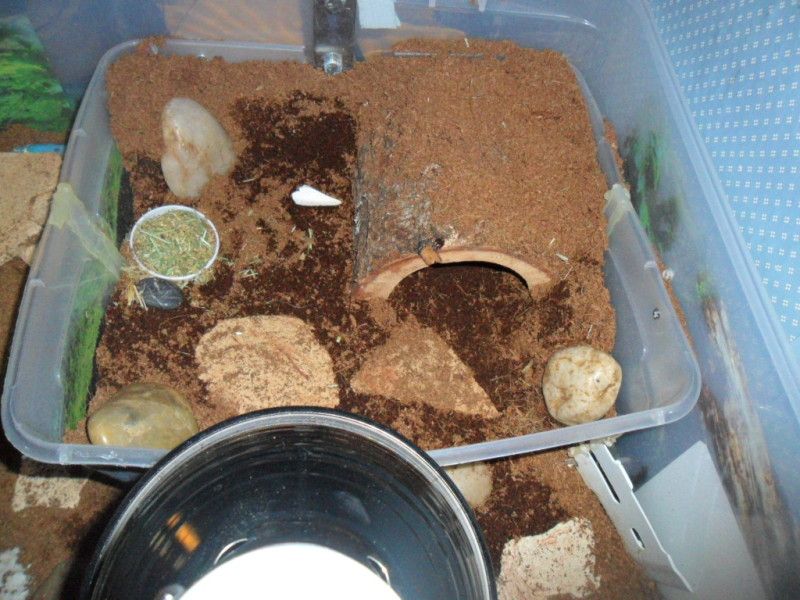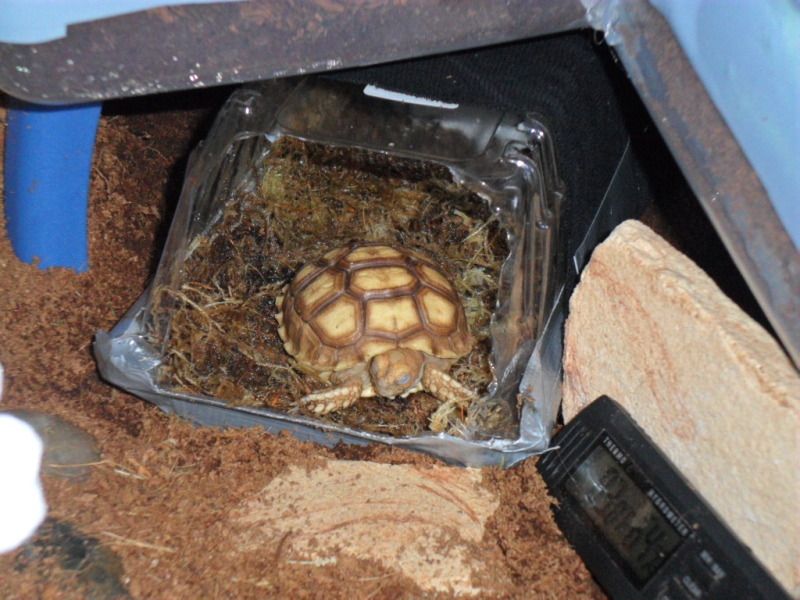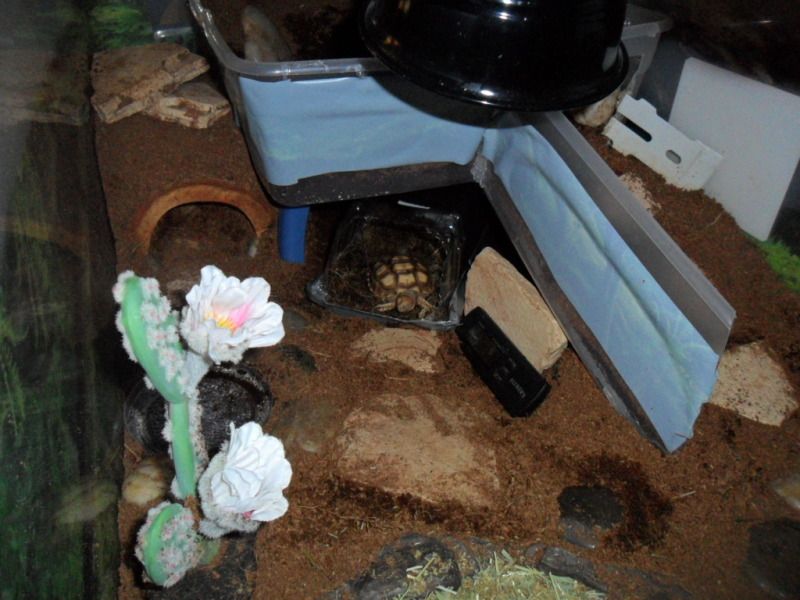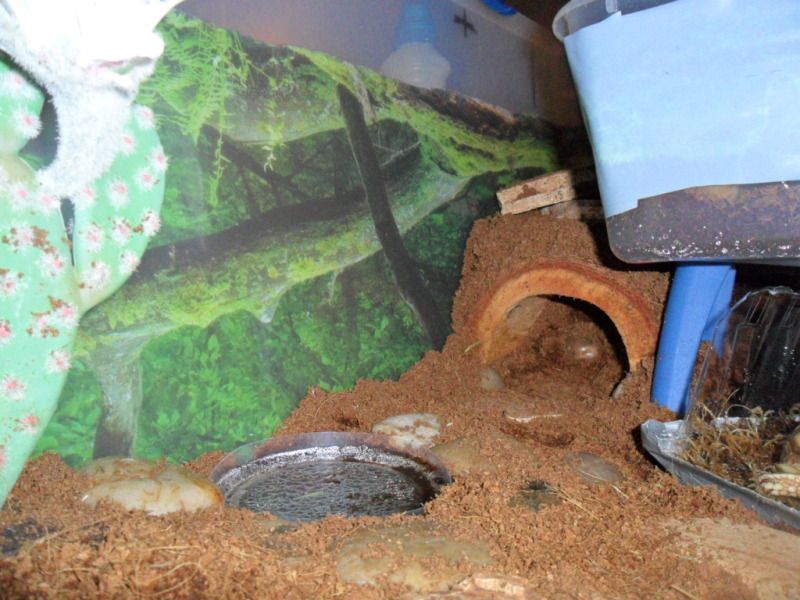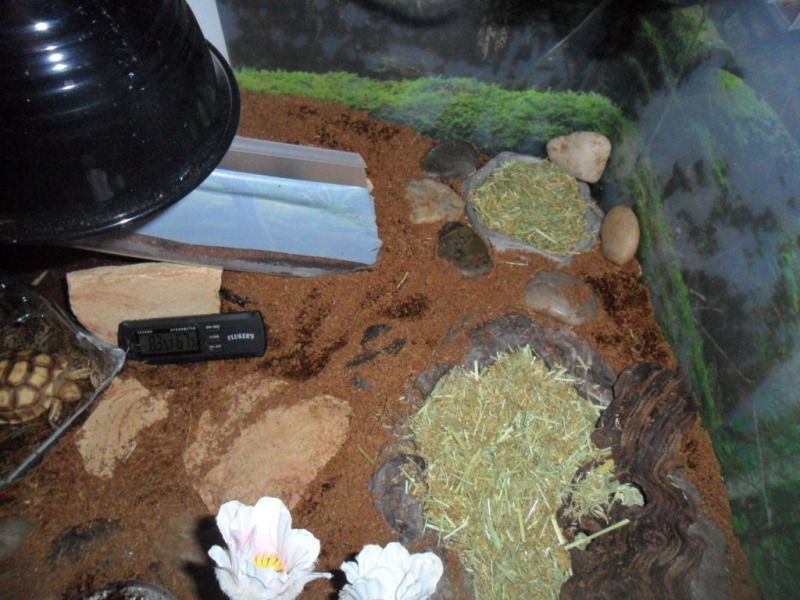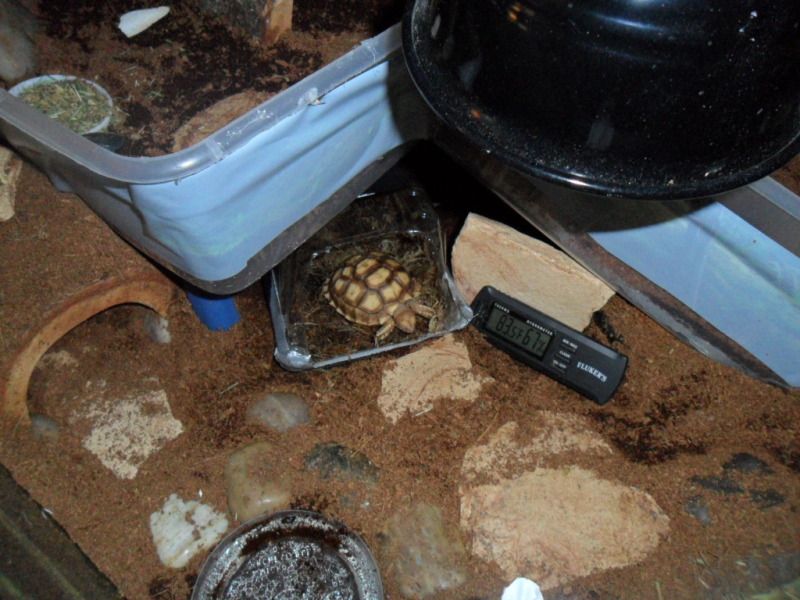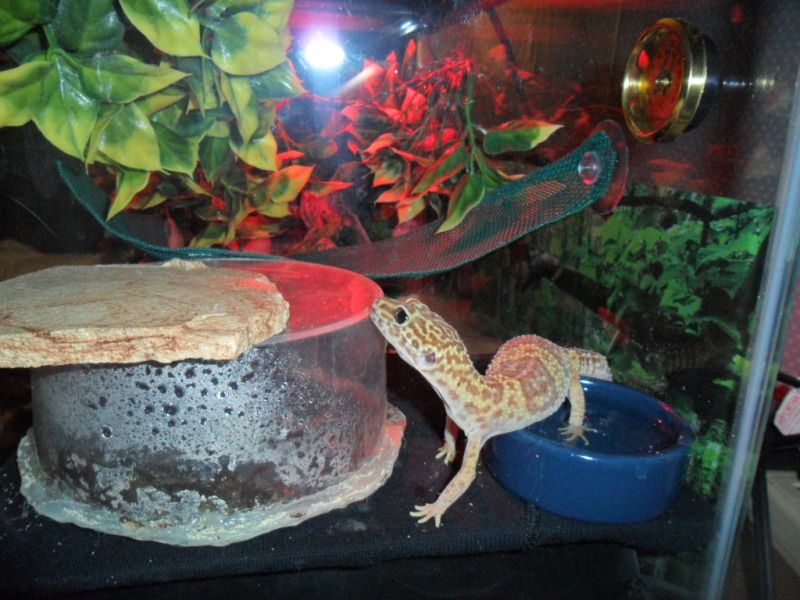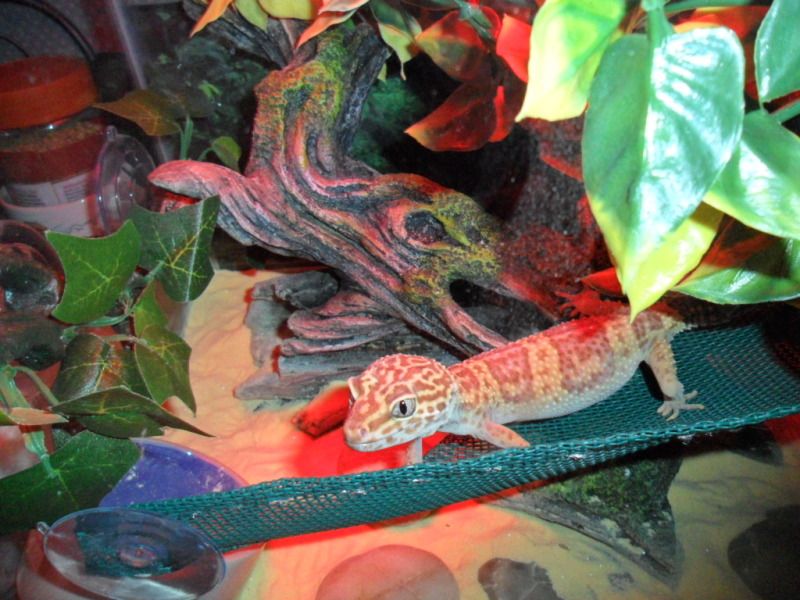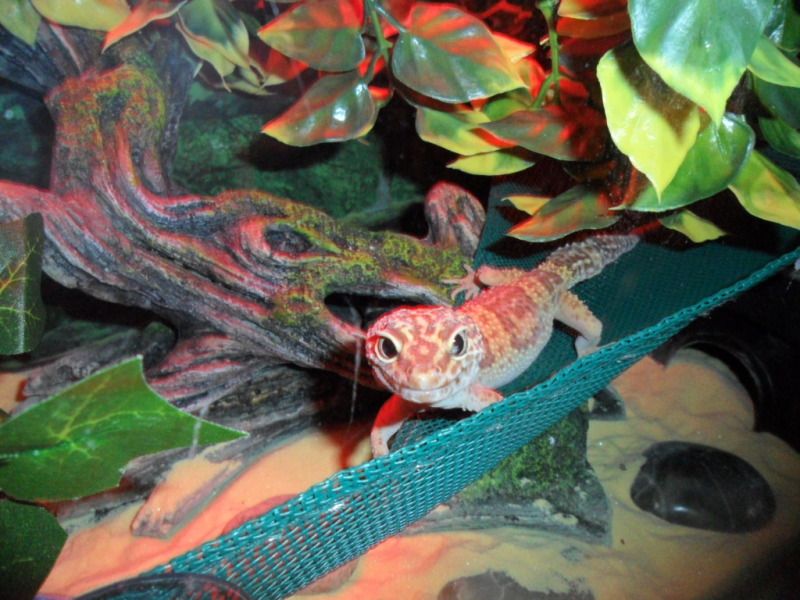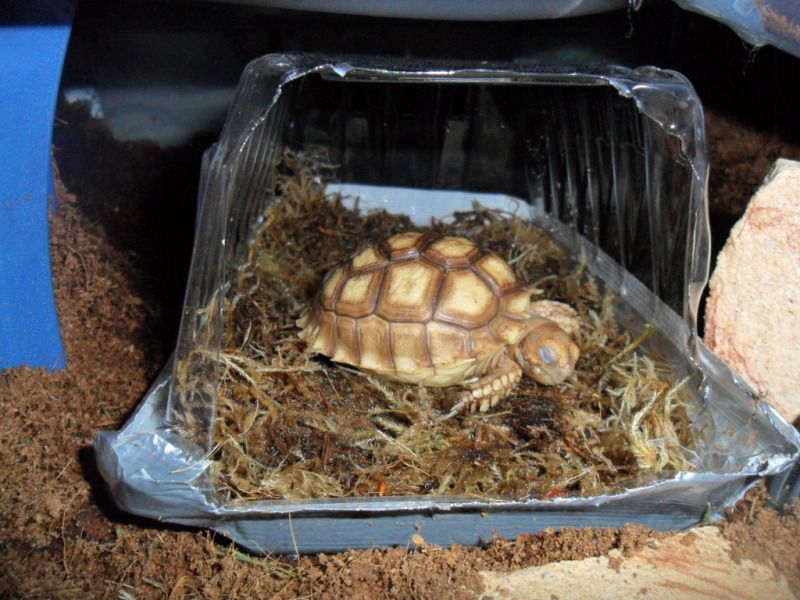I have a 4 month old sulcata tortoise named Turbo whom I brought back to health and I believe he is doing great. However, I am concerned about the softness of his plastron. It's kinda soft and flexible and last week he peed gritty calcium, which caused me to cut down on how much calcium I've been giving him. I give him 12 hours of UVB from a powersun, his basking spot fluctuates between 95-100 degrees and his hide is about 80 degrees on a lower level. At night I keep humidity between 80-90% and the temp stays around 77 degrees. I soak him in the morning and when I get home from work for at most 10 minutes each, he takes big gulps of water and usually poops in his water and he climbs out when he's all set. His stool is mainly grass and firm. He has access to timothy hay and orchard hay as well as fresh water. Once a day I feed him a mix of finely chopped hay, a leafy green such as collard green or dandelion and a light dusting of repcal calcium powder with D3. He eats more hay than greens and he doesn't mind the calcium anymore. Um, activity-wise, he cruises around. He's very strong and alert with big beautiful black eyes and always clicking his beak, so he seems to be very happy. Am I doing everything right and should this be of concern to me? I nursed him back to health from an upper respiratory infection, could the soft shell be the result of that? Here are some pics of him, I think he's doing awesome, but the soft plastron has me worried.

